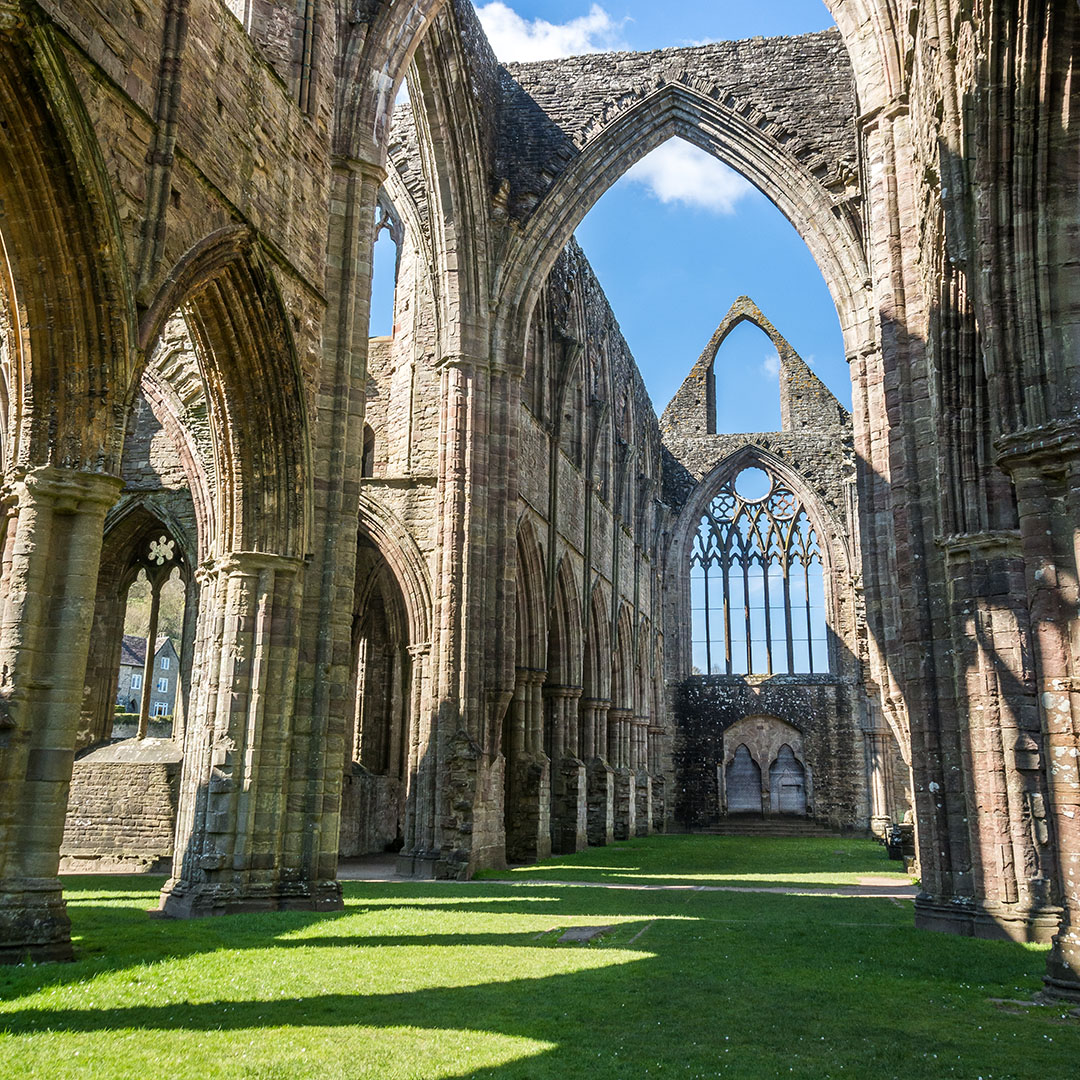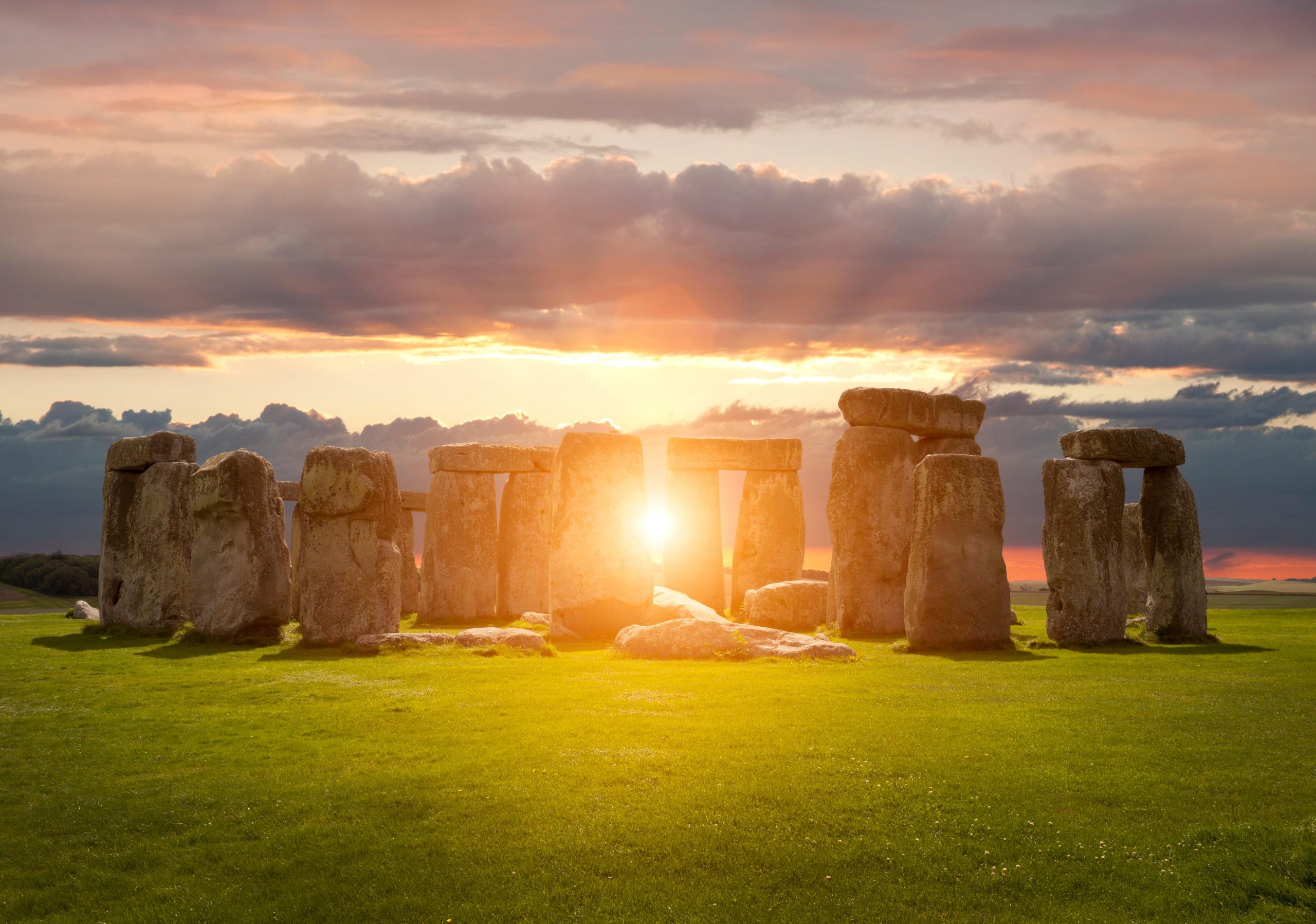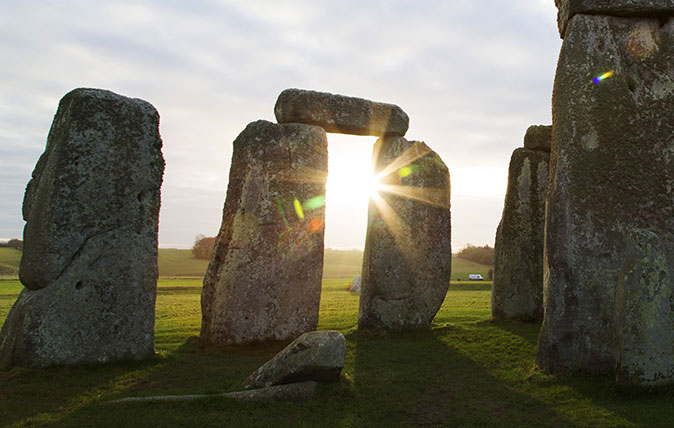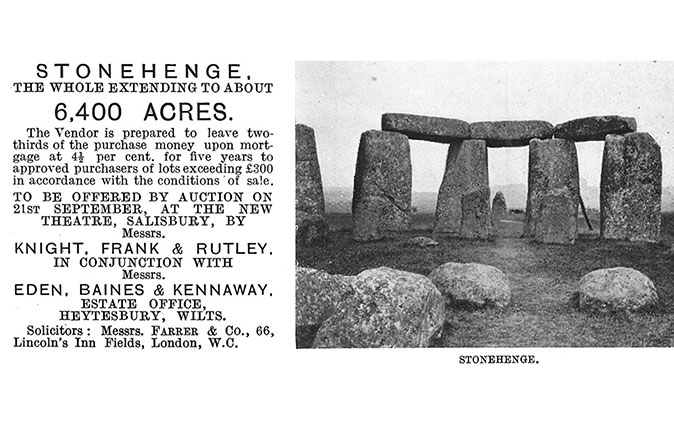Should we re-roof Tintern Abbey, and re-erect the fallen stones of Stonehenge?
Our most celebrated ancient ruins draw visitors by the tens of thousands, drawn by the mix of history, romance and beauty. But could we treat them differently? And where would we draw the lines if we did?

Every Thursday we look back into Country Life's architecture archive — this week, it's a piece looking at Tintern Abbey (cover star of our latest issue) and Stonehenge, and asks the question of how, why, and indeed if we should restore fallen monuments.
The date of this piece in the news section of the magazine, entitled 'Archaeology and the Picturesque', is June 30, 1955 — and the fact that similar ideas were debated by Sir Tim Laurence in the magazine just a couple of months ago shows just how arguments come and go.
Many revolutions of taste and conscience have occurred since William Gilpin, nearly two centuries ago, exclaimed of the ruins of Tintern Abbey that ‘a mallet, judiciously used, might be of service’ in correcting the ‘vulgarity of their shapes.’ The scientific archaeologist has long since replaced not only the romantic artist but the curious antiquary as our guide To ruin'd seats, to twilight cells and bowers, now valued less as sights to warm the imagination than as sites to instruct the intellect.
The subject of Turner's luminous pencil are scheduled Ancient Monuments, in which the texture of time and neglect is replaced, and compensated, by care for their stability and survival. Notoriously there have been, and continue to be, many instances of this solicitude applied too ruthlessly.
In its young days the Ancient Monuments Department of the Ministry of Work was criticised for that very reason. Promoted by the Act of 1953 into a Board, it now issues it first annual report, which can be the more welcomed since it evinces some anxiety to reconcile differing scales of values in connection with perhaps our greatest and most ancient monument, Stonehenge.
A group of eminent archaeologists who have recently conducted excavations there would like to see, as Inigo Jones put it, ‘Stonehenge Restored.’ In their view the re-erection of a number of the fallen stones would ‘enhance the value of the monument to the student and make it more intelligible to the ordinary visitor.’
Leaving aside the more relevant though less practicable means to that end, namely, removal of iron fences, car-parks, kiosks, and so on, and restoration of the fane's bleak primeval solitude, the Board reviews the proposal as one affecting historical relativity. Apparently the Romans tried deliberately to destroy Stonehenge, and succeeded in overturning some of the Stones.
Exquisite houses, the beauty of Nature, and how to get the most from your life, straight to your inbox.
There will be support for the Board's view that this is a strong reason for leaving them prone as part of Stonehenge's history as well as of the picturesque. The western trilithon, however, is known to have fallen toward the end of the 18th century (an engraving by Loggan shows it standing) and other stones as lately as 1899. The Board considers that these might be reinstated consistently with ‘the conservative policy pursued by the Ministry of Works.’ To do so would also help to preserve the mysterious carving recently found on one of them and in danger of erosion by people's boots.

The principle of respecting defacements due to historical development may seem to some scientific minds no more defensible than Mr Gilpin's use of a mallet to enhance the picturesque. But in the broader view which is slowly spreading it is surely as right in the case of a prehistoric as in that of an historic monument, such as a church, the ‘restoration’ of which to its ‘Early Pointed purity’ has long ceased to be approved.
Yet there is a long-term programme for ‘restoring’ the prehistoric circle of Avebury by completely removing the picturesque medieval village where it impinges upon it. To find it necessary to destroy the texture of history on such scale implies, to say the least, a certain straitness of mind in students, while depriving the ordinary visitor of the pleasures of imagination and discovery.

Credit: Rex
Celebrating 100 years since Cecil Chubb donated Stonehenge to the nation
Friday 26 October 2018 marks the centenary of Cecil Chubb's magnanimous gesture: turning Stonehenge over to the care of the

Credit: ©Country Life Picture Library
The day that Stonehenge was sold via the pages of Country Life
Stonehenge is shortly to be changed forever, with the planned tunnel getting the go-ahead. But it's not the first time
Toby Keel is Country Life's Digital Director, and has been running the website and social media channels since 2016. A former sports journalist, he writes about property, cars, lifestyle, travel, nature.

